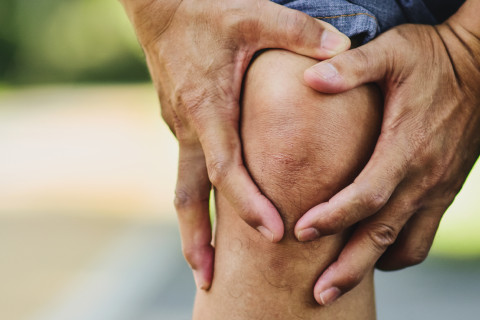The doctoral dissertation in the field of Applied Physics will be examined at the Faculty of Science and Forestry, Kuopio Campus and online.
What is the topic of your doctoral research?
The topic of my PhD dissertation is knee osteoarthritis. Osteoarthritis is troubling over 40 million people in Europe alone. The quality of life of osteoarthritis patients is negatively affected by joint pain and restricted joint motion which are preceded by the degradation of articular cartilage covering the ends of bones. The cartilage degradation cannot be reversed. Therefore, it is of utmost importance to prevent and slow down the cartilage breakdown. In order to achieve this, the degradation mechanisms must be understood and ways to predict the disease progression must be found. For these aims, computational modeling offers a feasible solution.
In the thesis, we developed tissue- and joint-level computational models predicting one phenotype of osteoarthritis, namely post-traumatic osteoarthritis (PTOA). The models comprise two main mechanisms behind PTOA: biomechanical trauma or excessive loading and inflammation. Moreover, in order to understand the early-phase biomechanical and inflammatory mechanisms behind PTOA, in collaboration with Massachusetts Institute of Technology (MIT) we developed an experimental bovine cartilage model of the disease. The results from such experimental models are important for calibration of the biophysics-based computational models.
What are the key findings or observations of your doctoral research?
The biomechanical and inflammatory cartilage degradation mechanisms were combined concomitantly for the first time in tissue-level computational models. The models predicted that during physiological loading, e.g., normal walking, the shearing and straining of the tissue may lead to localized degradation especially near chondral lesions. The effects of inflammation were observed in wider areas; cartilage surfaces in contact with external fluid act as a way of transport for pro-inflammatory biomolecules (cytokines). The cytokines may interact with cartilage cells, resulting in enzymatic tissue degradation. When the biomechanical and inflammatory mechanisms were acting simultaneously, their synergistic effect was greater than that of either mechanism alone.
These findings are in line with the tissue-level experimental literature and with joint-level quantitative magnetic resonance imaging (MRI) findings.In the tissue-level experimental work, we found that physiological loading may slow down the degradation in injured and inflamed cartilage over a short, few-day timescale. Over a longer timescale, however, the physiologically loaded, injured, and inflamed cartilage samples were more degraded than those without physiological loading. These results need further validation especially in the joint-level, but they hint that repetitive loading, e.g., during rehabilitation, could turn detrimental for cartilage health if a state of chronic inflammation persists.
How can the results of your doctoral research be utilised in practice?
ENG: The results of the doctoral research serve as a cornerstone for more patient-specific prediction of PTOA progression and personalized, computer-aided planning of interventions. For instance, the fourth study of the thesis proposed a modeling workflow where information about patient MRI, synovial fluid samples (cytokine concentrations), and motion analysis were combined for a patient that had undergone an anterior cruciate ligament reconstruction. The model predicted similar cartilage degradation as the quantitative MRI showed.
Motivated by the present results, the future numerical frameworks will aim to predict how different interventions would affect the biomechanical and inflammatory aspects of the cartilage degradation, and how these aspects could reflect on the patient-reported pain sensation. Such a computational tool could help orthopaedists to choose the optimal, patient-specific treatment, leading to improved patient quality of life.
What are the key research methods and materials used in your doctoral research?
The doctoral research utilized computational modeling, more specifically finite element modeling. The cartilage degradation predictions they provided were compared to experimental findings. Tissue-level models were developed in collaboration with MIT, and the joint-level model of an anterior cruciate ligament-reconstructed patient was created in collaboration with University of California San Francisco, Cleveland Clinic (Ohio), and MIT. The joint-level models included quantitative MRI, synovial fluid samples, motion analysis, and musculoskeletal modeling. The tissue-level experimental model in bovine cartilage was conducted during a researcher exchange in MIT, in the laboratory of Prof. Alan Grodzinsky who will be conferred the title of Honorary Doctor of UEF.
The experimental methods included a controlled compressive injurious loading, exogenous cytokine challenge, and cyclic physiological loading exerted on cartilage samples with a mechanical compression apparatus. Cartilage composition was investigated with spectrophotometric DMMB-assay and digital densitometry, biosynthesis with radiolabeling, DNA with fluorometric assay, and cell viability with fluorescence microscopy. This doctoral research is in line with the strategic research profile areas of UEF and a part of the research of the Musculoskeletal Diseases Research Community and the Biophysics research group.
The doctoral dissertation of Atte Eskelinen, MSc, entitled Biomechanics and inflammation – regulators of articular cartilage degradation: Models aiming towards comprehensive prediction of post-traumatic osteoarthritis progression (Biomekaniikka ja tulehdus – nivelruston rappeutumisen säätelijät: Kohti kokonaisvaltaisempaa traumaperäisen nivelrikon etenemisen ennustamista), will be examined at the Faculty of Science and Forestry. The Opponent will be Professor Farshid Guilak, Washington University in St. Louis, USA; Shriners Hospitals for Children, and the Custos will be Professor Rami Korhonen, University of Eastern Finland. Language of the public defence is English.
For further information, please contact:
Atte Eskelinen, [email protected], tel. +358 40 748 3373




